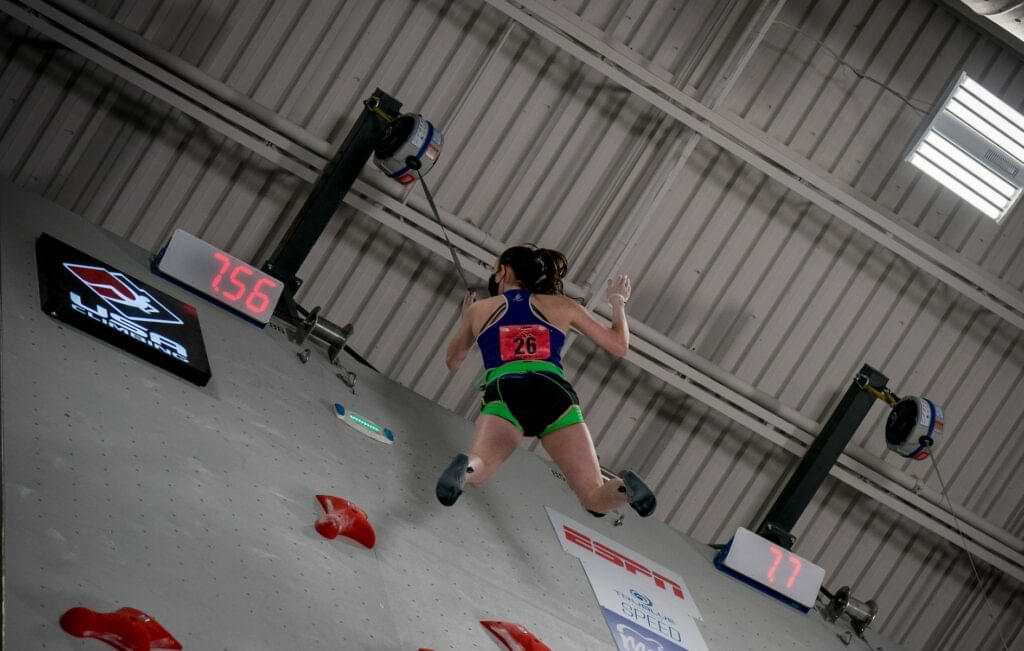As practiced by Sharma Climbing gyms
“Climbing is very safe when done properly. But, a climber always has to take responsibility for their safety—whether it’s their knot, their harness or, in the case of auto belays, making sure they’re clipped into their belay loop.”
– Chris Sharma, professional rock climber and owner of three climbing gyms
1. Establish an auto belay zone
Setting aside an area exclusively for auto belays can result in a host of benefits and is worth considering if the layout of your gym allows for it. In terms of staffing, an auto belay zone makes it easy to monitor large numbers of climbers with only a few dedicated staff members. A separate auto belay zone also promotes safety, lowers potential risks, helps build a unique community, and improves the flow of traffic across the facility.
2. Give an auto belay orientation
Auto belays are such intuitive devices that many facilities skip the orientation stage altogether. Unfortunately, this gap in training can lead to unnecessary complications. Nearly all auto belay-related injuries are the result of human error, so it’s worth taking the time to make sure climbers are aware of potential risks, as well as how to avoid them.
Reviewing basic skills like how to tighten a harness, how to clip into a carabiner, and how to test for proper webbing retraction can prevent injuries and cultivate confidence in new climbers.
For more experienced climbers, auto belay orientation should emphasize the importance of always remaining aware of your surroundings. Experienced climbers are far more likely than beginners to become preoccupied with maxing out their workouts and forget to clip into the auto belay before starting up the wall.
For more information, check out How to Give a Proper Auto Belay Orientation.
3. Document auto belay competency
Just like top roping or lead climbing, gyms should have a system in place to document which climbers are auto belay competent. This requires two steps: orientation and assessment. After completing orientation, climbers should then be able to demonstrate their understanding on an actual auto belay.
4. Provide auto belay orientation cards
A simple, visual way of determining that a climber is certified as auto belay competent is to provide auto belay orientation cards. Color coding these cards allows staff members to easily distinguish between auto belay, top rope, and lead climbing certifications.
5. Use belay gates
With their bright colors, bold messaging, and expansive footprint, belay gates make it very difficult for climbers to forget to clip in before climbing. Belay gates also help to space out adjacent climbers along the base of the wall and warn spectators not to stand beneath active climbers.
6. Cover start holds with belay gates
One of the best ways to prevent human error is to cover the starting holds of a route with the corresponding belay gate. While this may require a few adjustments to your route setting, the configuration provides an extra layer of security against inattentive climbers.
7. Use gym monitors
All it takes is one or two people to lead auto belay orientations, answer questions, and ensure that everyone is following basic safety practices. Just as they do for other disciplines, gym monitors should receive specific internal training for supervising auto belay use and should feel confident giving an auto belay orientation.
8. Keep climbing disciplines separate when possible
Auto belays significantly increase the throughput of a given area, allowing for more climbs in a smaller space in a shorter amount of time. By keeping auto belays separate from top rope and lead climbing routes, you can reduce the traffic in those areas, as well as the chances for overlapping swings, falls, and collisions. Separating the different disciplines also removes any temptation for auto belay users to snatch at or clip into quickdraws.
Beyond safety considerations, separating the different disciplines also creates a better overall climbing experience. Beginners feel more comfortable in a controlled environment, while experienced climbers can take more efficient training laps with fewer breaks in between.
For more information
The Association of British Climbing (ABC) recently released a set of safety guidelines for the operation of auto belays. The guidelines provide a more detailed examination of many of the topics laid out in this article. You can download a copy of the ABC’s proposed auto belay safety guidelines here.




Leave a Reply